Has this ever happened to you?
Mom: “Will you pick up your toys?”
Kid: “No.”
Mom: “Do you want to come to the dinner table?”
Kid: “No.”
Mom: “Are you ready to brush your teeth?”
Kid: “No.”
When you ask your child if they want to do something, a perfectly appropriate response is “Nope.” When DO they want to do things like brush their teeth, put on their shoes, come to the table??! Answering “No” is a normal and to be expected answers from kids especially as they learn to express their autonomy and push buttons while doing so! Together we will look at how to present our requests for our child to do something so to avoid hearing “No!” all the time!
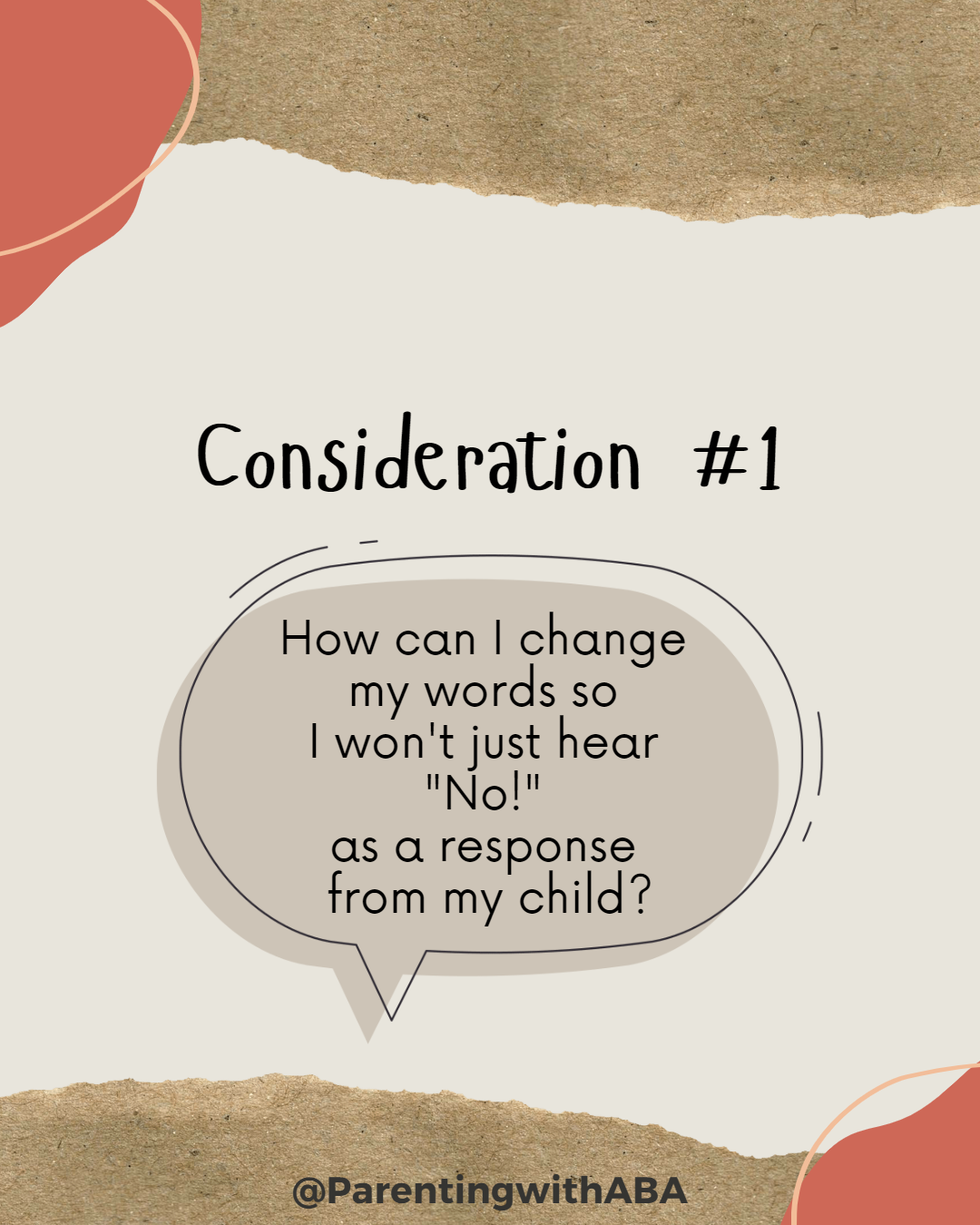
Constantly hearing “No” all the time is super frustrating when we are needing our child to do something.
There are two ways to consider this situation from a behaviorist viewpoint:
- Change your wording so that you aren’t just going to be told no constantly.
- Make sure your child knows how to say no/ refuse things appropriately to prevent problem behavior
This week we are going to look at door #1. If you’re interested in teaching your child to refuse, check out this older post of mine.
There are things every single day we NEED our kid to do. Those super fun daily routines that grown-ups do because we know they are necessary. Things like brushing teeth, dressing appropriately for the weather, eating healthy foods, cleaning up our homes so we don’t trip over everything, buckling up in the car, the list goes on and on.
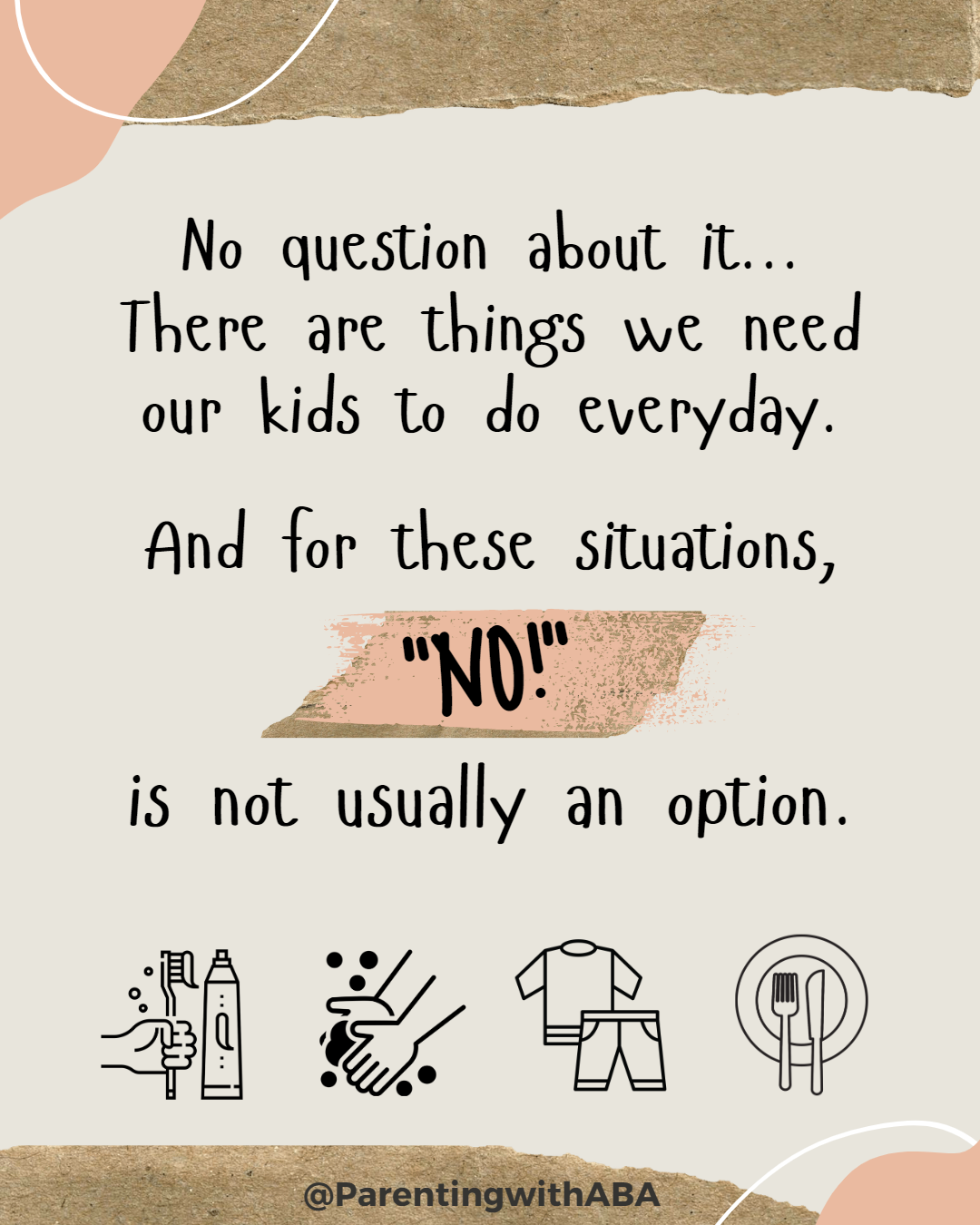
These things are not optional, non-negotiables. They just need to happen!
So instead of saying these things:
- Will you…
- Can you…
- Do you want to…
- Are you ready to…
Try this instead:
- It’s time to…
The clock is saying it’s time to brush teeth. Who wants to argue with the clock? It doesn’t argue back. Mom isn’t just bossing you around to brush your teeth- it’s just time to. You can try to get into a power struggle with the clock, but I think it’ll end pretty quickly. It might take some practice, follow through, and consistency before you completely stop hearing “No!” – But if you simply state, “It’s time to ___,” and then calmly prompt your child to complete the task (without arguing back), your child will come to learn that when it’s time to do ___, it is simply time to do ____. They will eventually learn there is no use in fighting the request, because ___ is going to happen regardless. The request becomes a structured part of the routine.
I don’t know about you, but I don’t love bossing my kids around. It doesn’t feel good. It’s the not the fun mom persona I thought I would have when I started this gig. So I like blaming the clock for these things. “It’s time to get ready for school…” Not mom asking you over and over because I’m bossy or I want you to get ready for school. It’s just time for that.
It’s also good to reserve these requests for when it really is time for _____ and compliance is not an option. If you don’t care if your request is met with a “No!”, then ask it as a question. If you really do need to get out the door or have your child sit down for dinner, then phrase it as, “It’s time to___.”
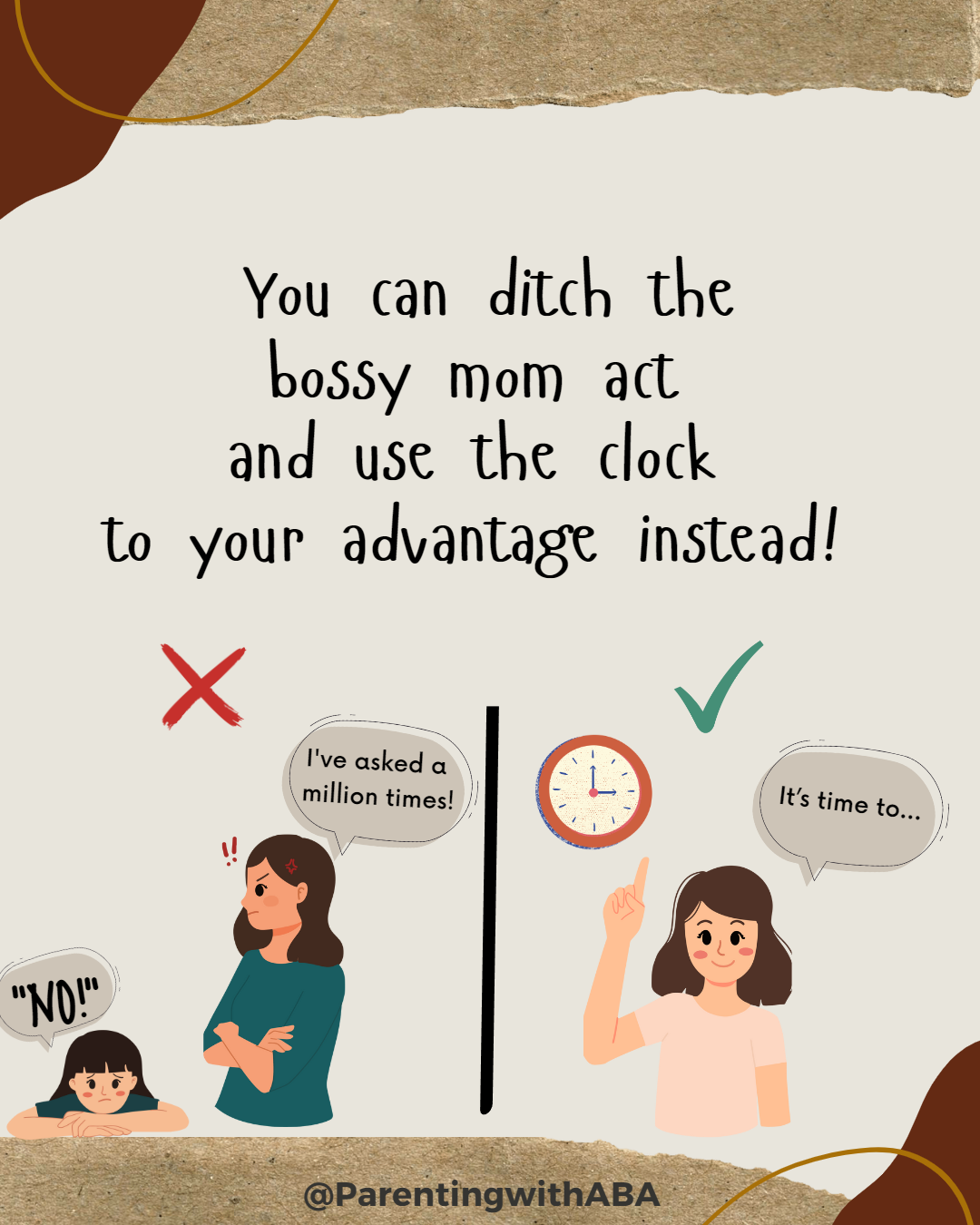
Pro tip: Try to be mindful of how many non-negotiables you are directing at your child in a given timeframe until your child gets the hang of it. Really make sure whatever you are phrasing as a “It’s time to _____” needs to happen and that you are ready to follow through with it! And of course, offer your child plenty of opportunities to make choices and assert their independence at other times throughout the day when appropriate. For a few other tips and tricks on getting your child to listen and follow directions, check out this other past blog post of mine.
Routines, visuals, and simple directives paired with clocks are all simple behavior tools to help create a little structure, a little support, and take a little pressure off your relationship with your child. Phrasing our requests in a matter of fact way (as in not a question) and using an established routine, visual, and/or clock to communicate that is simply time for ____ to happen helps eliminate the opportunity for a “No!” + power struggle.
Phrasing the request in a statement rather than a question does not leave it open for them to reply with a “Nope!” – Now I’m not saying your child Is magically going to start agreeing to everything you instruct them to do! – But using these tools makes it more about following routines and systems and less about obeying mom and bossing your kids around. That sounds like a major mom win to me and a much easier day for your child!
This week try saying this:
- It’s time to…
Not these:
- Will you…
- Can you…
- Do you want to…
- Are you ready to…
And always feel free to send me a message for additional support and/or book a free brainstorming session!
I’m here to help!
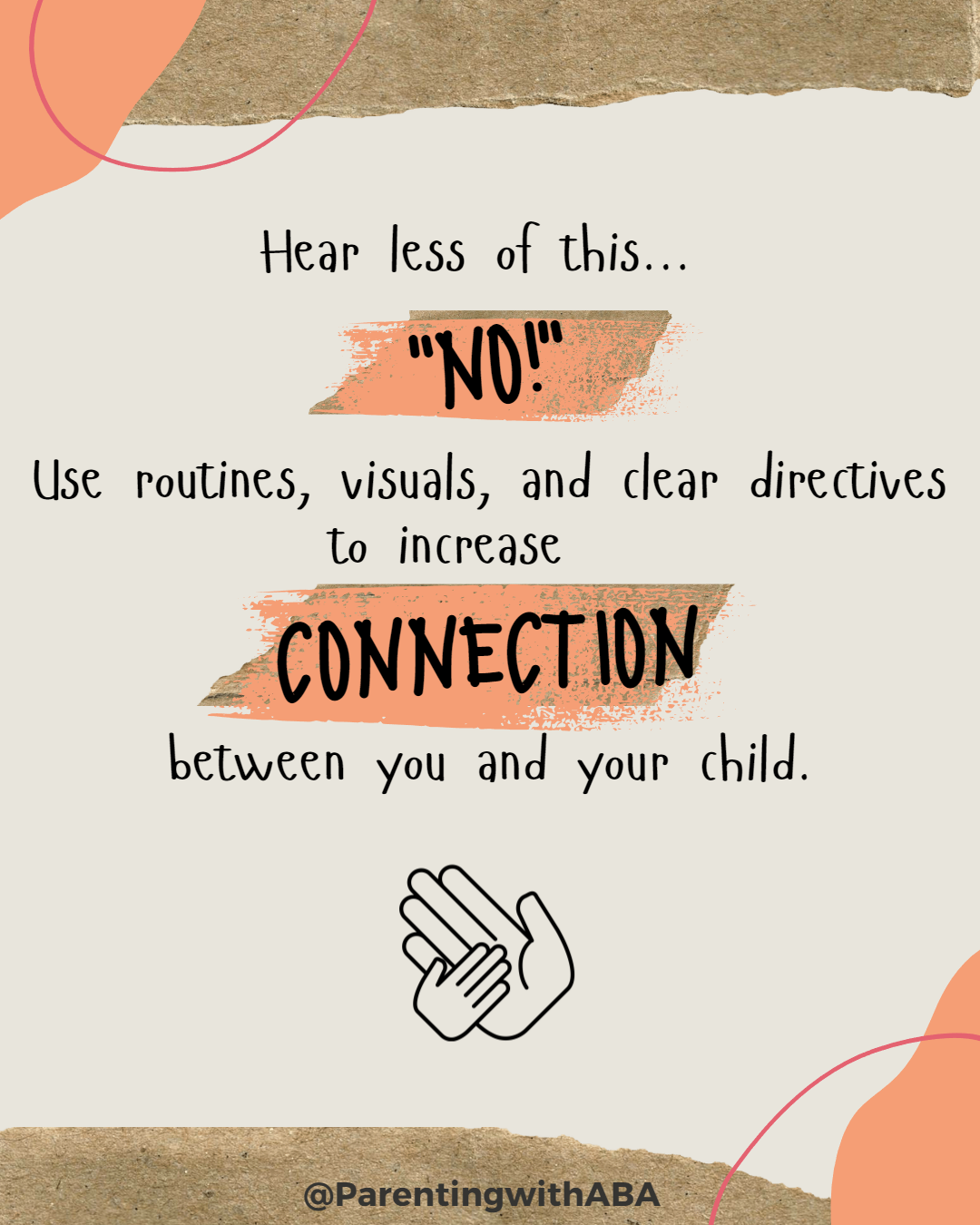
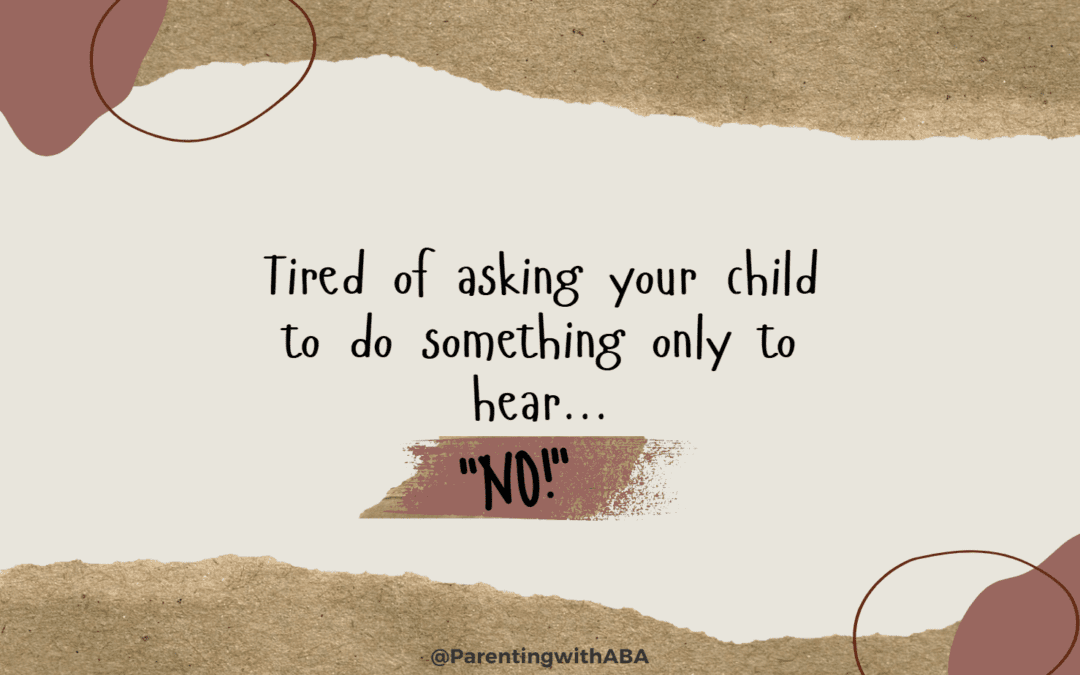
Recent Comments